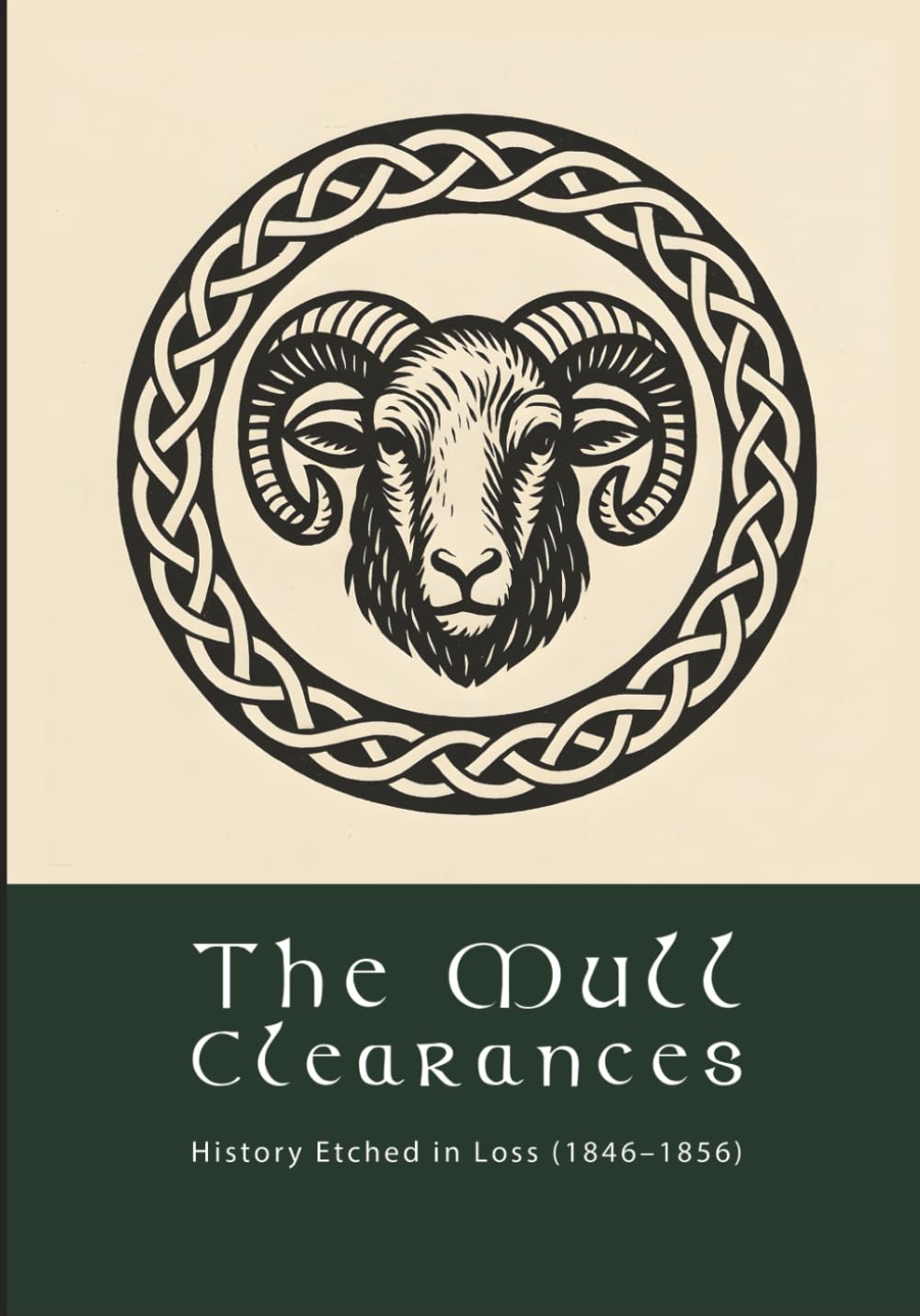The Isle of Mull, a rugged gem in the Inner Hebrides, is renowned for its dramatic landscapes, abundant wildlife, and charming towns. Yet, beneath its surface beauty lies a profound narrative – the enduring saga of human engagement with this captivating land. From the earliest nomadic hunters to today’s vibrant communities, Mull’s history is a rich tapestry woven with survival, innovation, clan loyalties, hardship, and resilience.
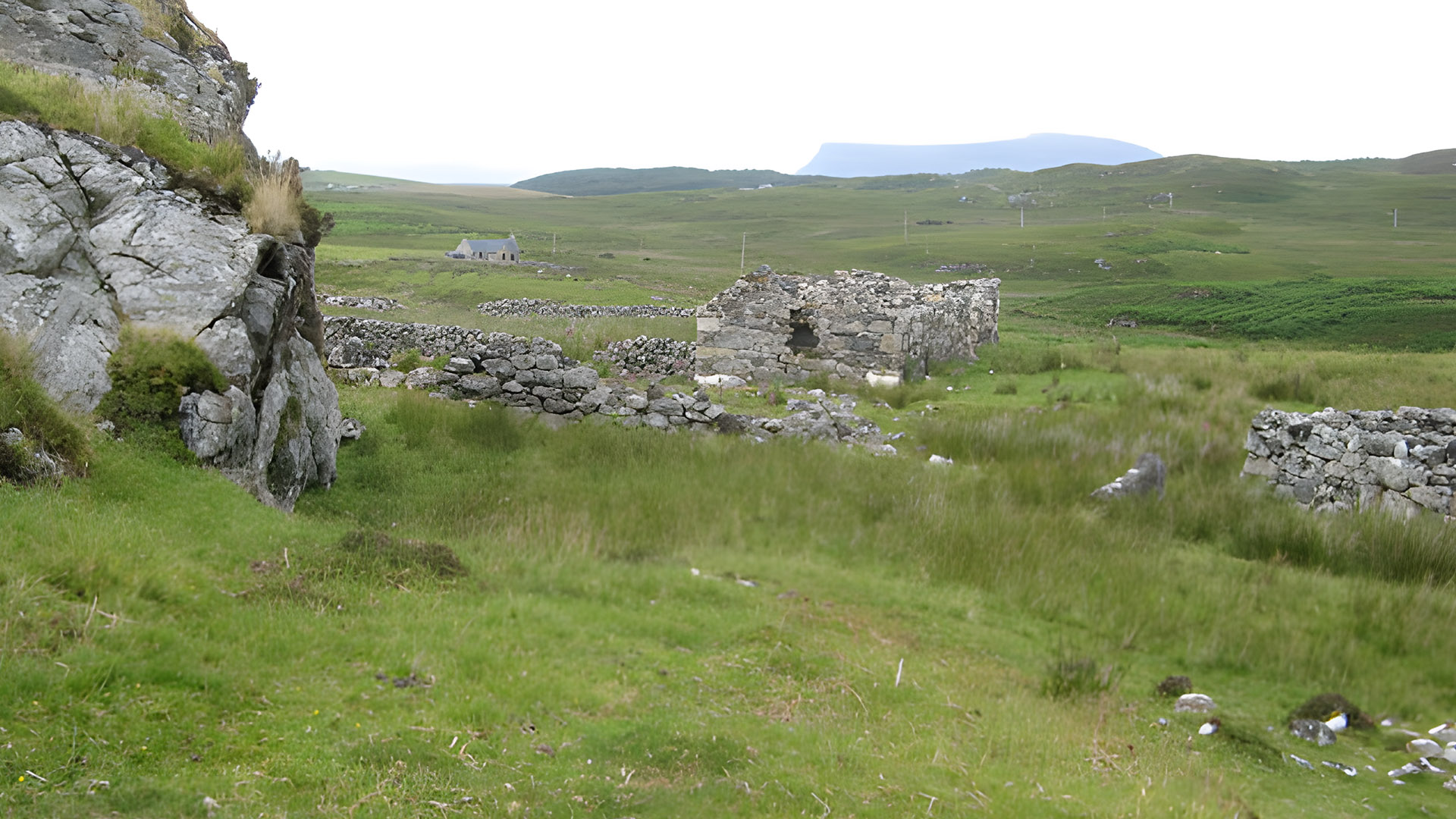
Knocknafenaig ruins by Jonathan Wilkins, CC BY-SA 2.0, via Wikimedia Commons
Early Settlers & Ancient Traces
Mull’s human story begins far back in prehistory. Archaeological evidence points to Mesolithic hunter-gatherers, the island’s very first inhabitants, arriving perhaps as early as 7,000 years ago. They left behind tools and shell middens, remnants of their resourceful lives along the coastline.
By the Neolithic period (around 4,000 BC), settled farming communities emerged, leaving behind more substantial markers. The island is dotted with silent testaments to their beliefs and ingenuity: standing stones, burial cairns, and chambered tombs like those found at Lochbuie. These ancient structures offer a tangible link to people who worked the land and buried their dead thousands of years before recorded history, demonstrating Mull’s enduring appeal as a place to live and thrive even in challenging conditions.
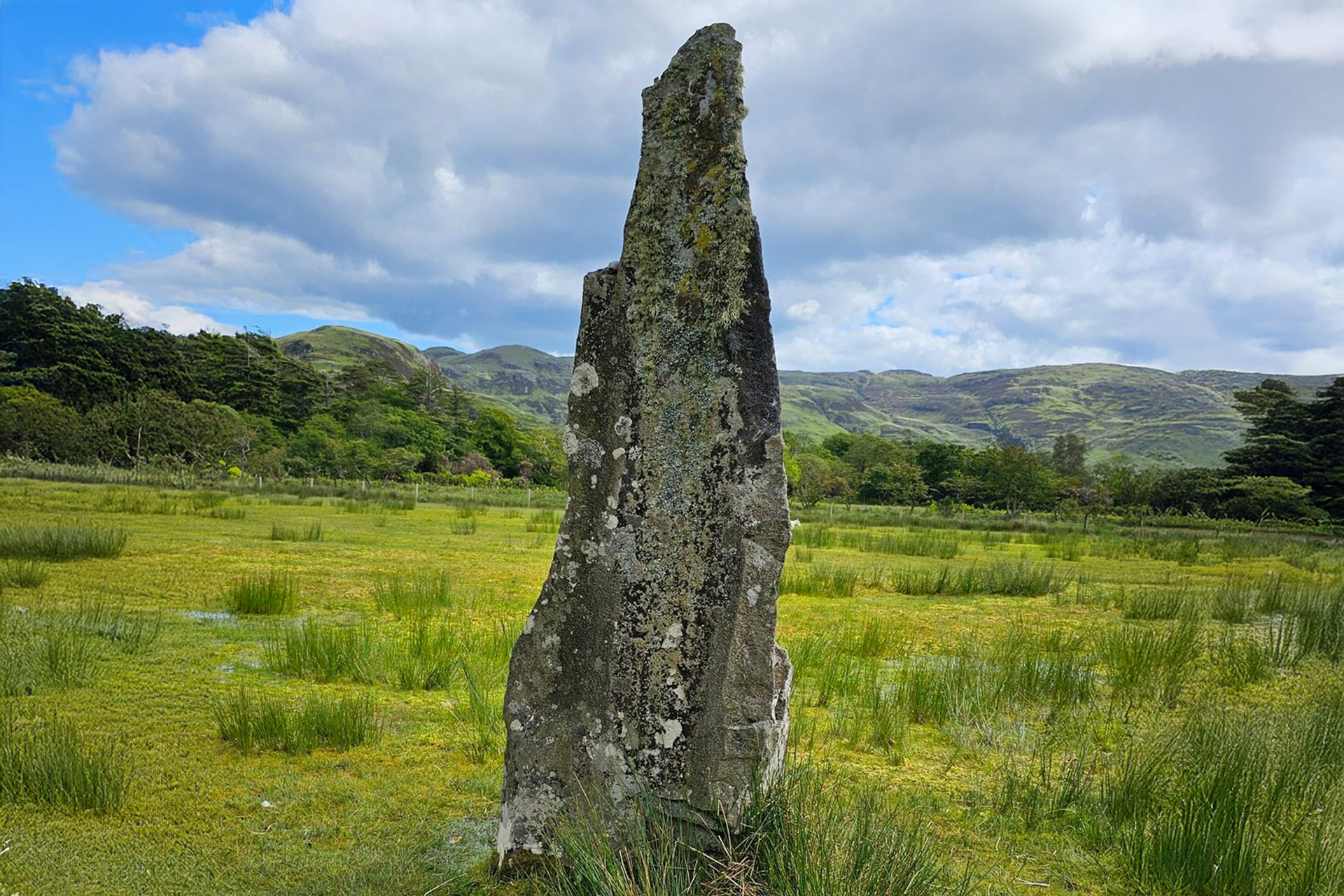
One of the Lochbuie outliers—this 3-metre monolith stands southwest of the circle, aligned with the winter solstice sunset.
Iron Age Forts & Early Societies
As the Bronze Age transitioned into the Iron Age (around 700 BC), Mull saw the construction of more defensive and complex structures. Hillforts, duns (fortified homesteads), and crannogs (artificial islands with dwellings) began to dot the landscape, signaling an era of increased social organization and likely, inter-group conflict. These impressive fortifications, often strategically placed on prominent hilltops or in lochs, speak of communities that needed to protect their resources and territories. Life would have been communal, with skills in metalwork, farming, and animal husbandry developing alongside sophisticated defensive strategies. While much remains mysterious about the daily lives of these Iron Age inhabitants, their physical legacies still stand defiant against the elements, offering tantalizing glimpses into Mull’s ancient societies.
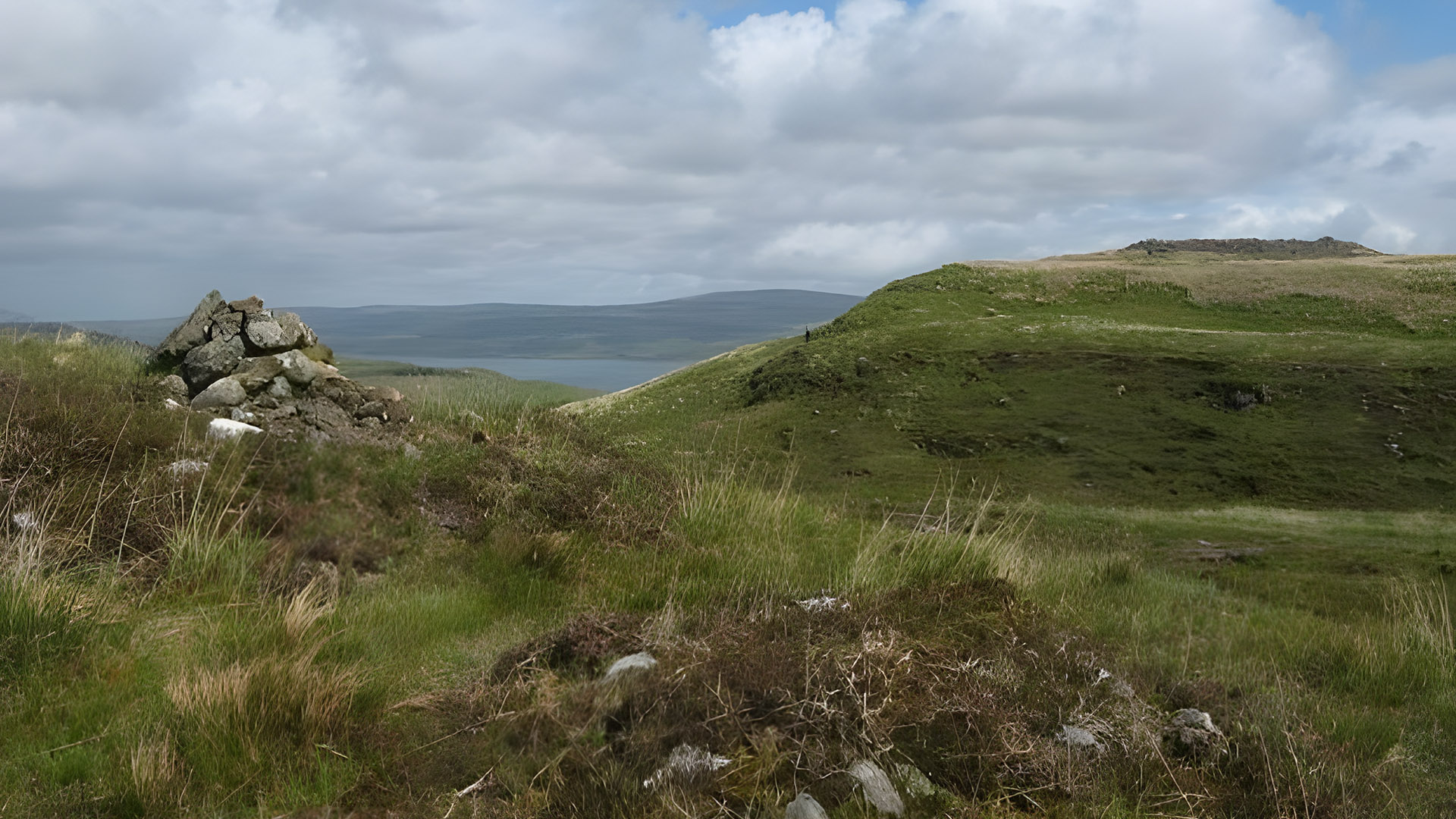
Dun on Cnoc na Sroine View of the Iron Age fort on Cnoc na Sroine from near the path leading from Aros Bridge to Killiechronan: Eileen Henderson / Dun on Cnoc na Sroine
The Dawn of Christianity & Norse Influence
The 6th century AD brought a profound shift to Mull with the arrival of Christianity, largely influenced by St. Columba’s monastic settlement on nearby Iona. Mull became an important stepping stone and a spiritual crossroads, absorbing Christian teachings and culture. Early monastic sites and crosses, though often fragmented, provide evidence of this burgeoning faith. However, this period of spiritual growth was soon challenged by the arrival of the Norse. From the 9th century onwards, Viking longboats raided and eventually settled across the Hebrides. Mull, with its strategic position, became part of the Norse Earldom of Orkney. Evidence of their presence can be found in place names, such as Craignure (from “Crag-Norse”) and the discovery of Viking hoards. While their rule was often harsh, the Norse also brought new trade routes and cultural exchanges, leaving an indelible mark on the island’s identity before their eventual decline.
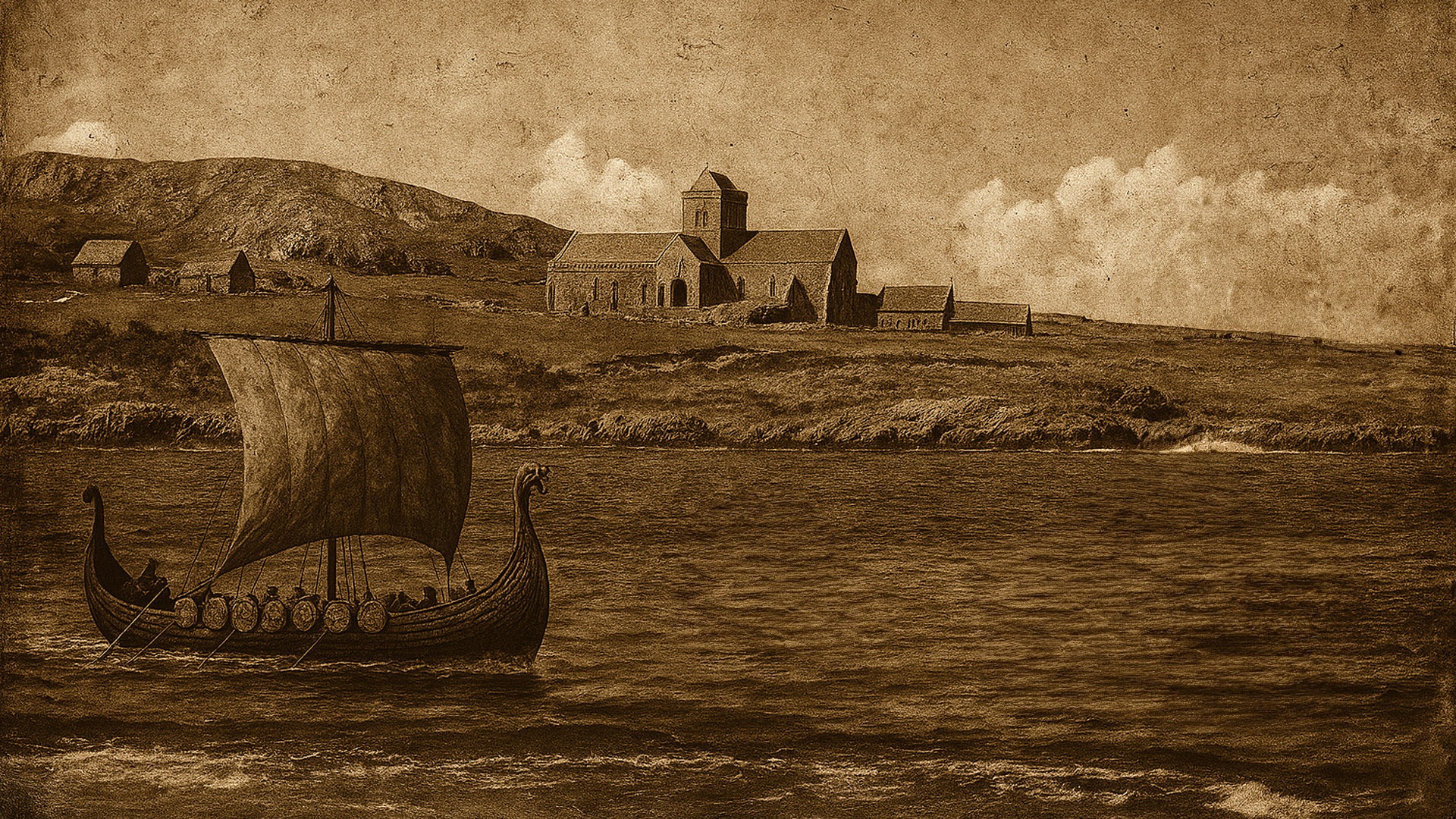
Viking Longship in Iona Bay.
The Age of Clans & Feudal Power
Following the decline of Norse influence, Mull entered the powerful era of clan rule. From the 13th century, the island became the stronghold of Clan Maclean, who built formidable castles like Duart Castle, strategically positioned to command the Sound of Mull. For centuries, the Macleans were dominant, their history intertwined with fierce battles, strategic alliances, and the complex politics of the Scottish Highlands. However, their power was eventually challenged by the rising might of the Clan Campbell, who steadily gained influence across Argyll. By the late 17th century, through a combination of political maneuvering and military pressure, the Campbells effectively displaced the Macleans as the dominant force on Mull. This era of powerful chieftains, clan loyalty, and territorial disputes shaped much of Mull’s social and political landscape for centuries, leaving behind a legacy of enduring fortresses and rich oral traditions.
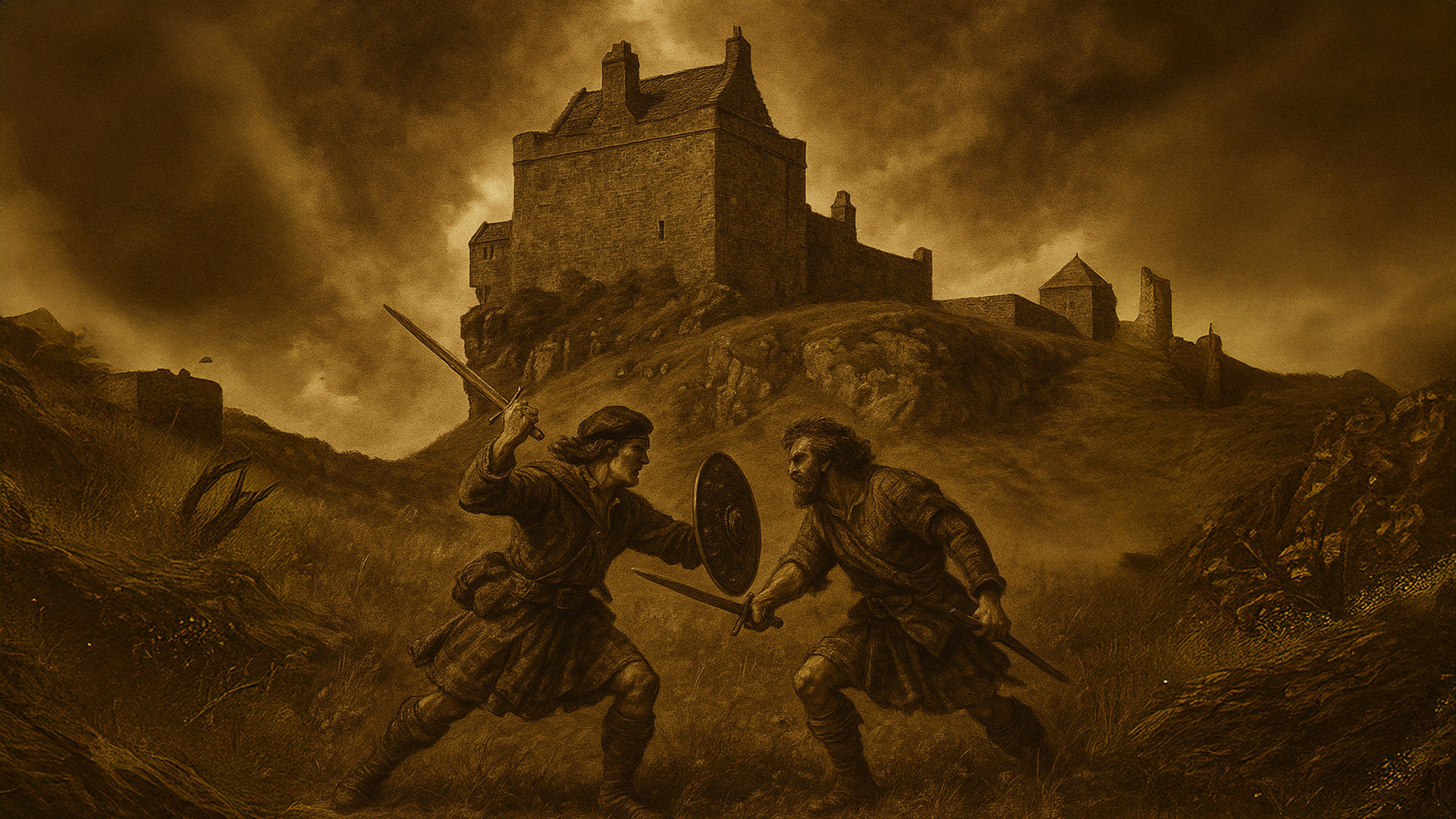
Clan Warriors fighting under Duart Castle.
Turbulent Times: The Clearances
The 18th and 19th centuries brought immense upheaval to Mull in the form of the Highland Clearances. Driven by economic shifts – particularly the desire for more profitable sheep farming – many landlords forcibly evicted their tenant populations. For the people of Mull, this was a period of immense suffering, as communities were torn apart, traditional ways of life were shattered, and thousands were forced to emigrate, primarily to Canada, Australia, and the United States. Villages were razed, and fertile lands once worked by generations were given over to vast sheep farms. The population of Mull plummeted dramatically, leaving behind poignant ruins of homes and crofts, silent reminders of a vibrant culture that was violently displaced. This traumatic period indelibly scarred the island, shaping its demographics and leaving a profound legacy in the collective memory of its people, both on Mull and in the diaspora.
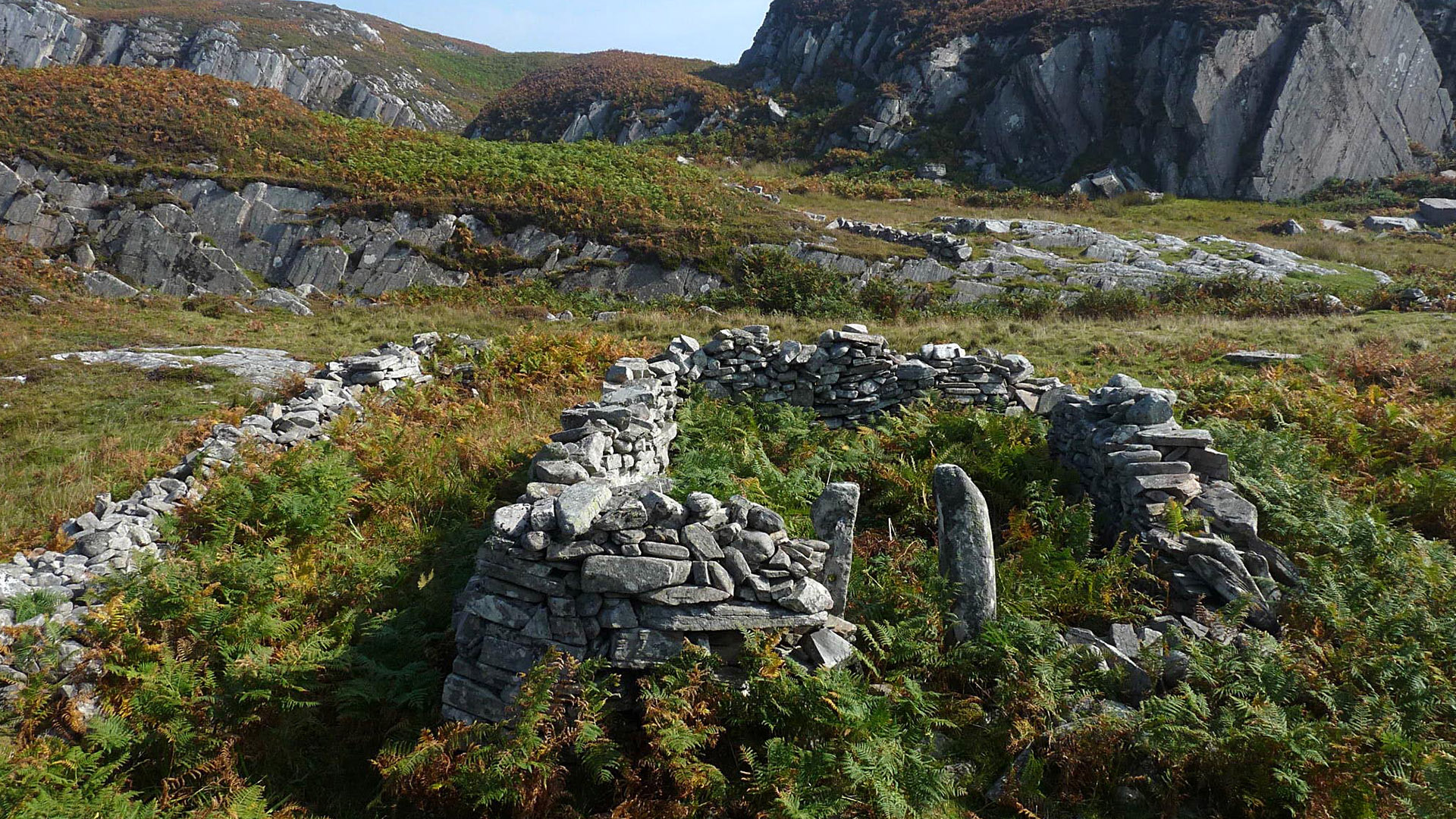
Stark reminder of the evictions that took place in this era. Ruined building above Tràigh Bhàn, Isle of Mull by Claire Pegrum, CC BY-SA 2.0, via Wikimedia Commons
Recovery & Modern Mull
After the depopulation of the Clearances, Mull experienced a slow but steady recovery. The late 19th and 20th centuries saw the emergence of new industries, particularly fishing and, increasingly, tourism. The island’s breathtaking scenery and abundant wildlife began to draw visitors, fostering a new economic lifeline. Despite its turbulent past, Mull has maintained a strong sense of community and cultural identity. Today, it is a thriving island, balancing traditional industries with a vibrant tourism sector. Its towns like Tobermory, with its iconic colourful waterfront, and villages across the island, welcome visitors from around the globe, eager to explore its natural beauty and delve into its layered history. Modern Mull stands as a testament to the resilience of its people, a place where ancient stories are preserved, and new chapters are continually being written by those who choose to make this special island their home.
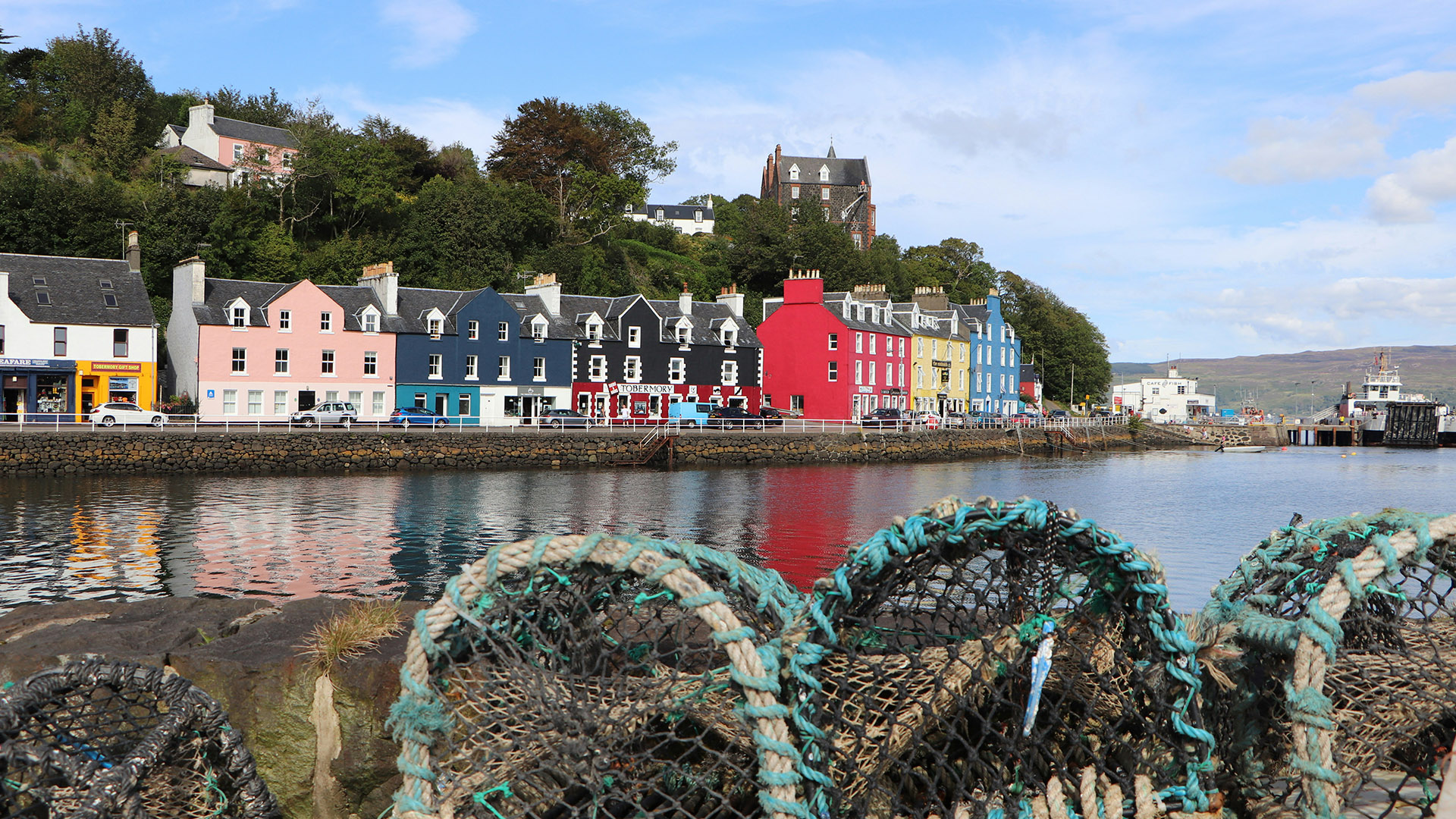
Tobermory’s vibrant harbour, a colourful testament to Mull’s enduring spirit and thriving modern community.
Conclusion
From the first flint tools of prehistoric hunters to the bustling ferry terminals of today, the human story of the Isle of Mull is one of enduring connection, adaptation, and unwavering spirit. Each ruined fort, every weathered gravestone, and indeed, every working farm and vibrant community today, adds another layer to this remarkable narrative. Mull does not just exist in time; it carries the weight and wisdom of all those who have engaged with its land, offering a profound sense of history that continues to shape its present and future.
Before eviction notices were hammered to croft doors and families forced from their ancestral glens, the Isle of Mull thrived on tradition, language, and community. The Mull Clearances: 1846–1856 is a deeply researched, emotionally resonant visual history of the decade that dismantled centuries of Gaelic life.

